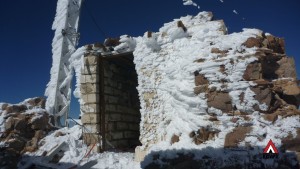 The climate will have a big effect on your challenge. Generally, summer is toughest, with the highest temperatures. Cooler times are easier, but come with their own challenges too, like rain, ice and snow. Daylight hours vary between seasons, which is important. Choosing when to go is about weighing up all these pros and cons, hoping you get the weather you planned for, and having a back up plan if you don’t. The landscape changes through the seasons too, which means some times are prettier than others. Check the latest weather forecasts before starting any challenge: challenge attempts should be postponed if heavy rains, snows or electrical storms or other hazardous weather is forecast.
The climate will have a big effect on your challenge. Generally, summer is toughest, with the highest temperatures. Cooler times are easier, but come with their own challenges too, like rain, ice and snow. Daylight hours vary between seasons, which is important. Choosing when to go is about weighing up all these pros and cons, hoping you get the weather you planned for, and having a back up plan if you don’t. The landscape changes through the seasons too, which means some times are prettier than others. Check the latest weather forecasts before starting any challenge: challenge attempts should be postponed if heavy rains, snows or electrical storms or other hazardous weather is forecast.
SPRING (March to May) – One of the best weather windows. Temperatures are relatively cool, at least compared to summer, and especially in the early spring. Daylight hours are longer, which helps: having daylight for longer makes moving and navigating easier. Most days are clear and sunny, but it’s also a time when rain often falls. If it does rain, it’ll make the rocks slippery, which will slow you down. Always be aware of flash floods. An added bonus in the spring is the beautiful blooming of plants and trees.
SUMMER (June to September) – The toughest time of all. Temperatures can hover around 30 degrees, but it can feel much hotter with prolonged exposure in the sun. Dehydration is a real risk, if you don’t manage your water intake carefully. Wear sun protection on your head and skin and take regular breaks in the shade, sitting out the hottest part of the day. It is also essential to carry enough water in summer. Discuss all water needs with your Bedouin guides. The 72 hour challenge is best in summer.
AUTUMN (October to November) – Another excellent window. Like spring, autumn brings cooler temperatures, which makes it easier. Daylight hours are still longer than winter. Rain sometimes falls in autumn, so all hikers should be prepared. And aware of the potential hazards rain can create. Water sources in the mountains might be lower in autumn, especially after a long, hot summer. It is important to discuss water management with your Bedouin guides. Autumn is another pretty time of the year, as trees in St. Katherine’s orchards turn crimsons and golds.
WINTER (December to February) – Some days are mild and cool, which are perfect for the challenge: others are below freezing with strong, bitterly cold winds. Winter is another time when rain is more likely and, depending on how cold it is, snow can fall too, especially on high peaks, increasing the demands of the challenge several times over. Weather hazards in winter will demand more safety equipment, which will increase what you have to carry, making it harder still. Winter also comes with the shortest daylight hours, meaning a longer period of the challenge is done in the dark.


